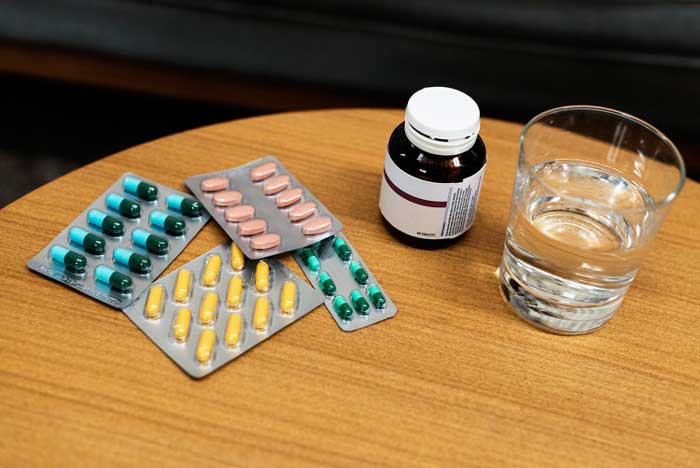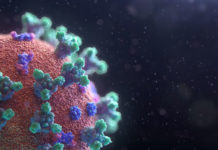 Heartburn as a sign of gastroesophageal reflux is experienced by 20–40% of the adult population of developed countries. According to international studies, about 161 million people in Europe and the United States suffer from heartburn. This burning sensation in the sternum is familiar to almost everyone. Someone has learned to live with this symptom, but it turns out that if you don’t pay attention to it in time, the complications can be dire. All you need to know about heartburn is brought to you by Geniuspharm.com.
Heartburn as a sign of gastroesophageal reflux is experienced by 20–40% of the adult population of developed countries. According to international studies, about 161 million people in Europe and the United States suffer from heartburn. This burning sensation in the sternum is familiar to almost everyone. Someone has learned to live with this symptom, but it turns out that if you don’t pay attention to it in time, the complications can be dire. All you need to know about heartburn is brought to you by Geniuspharm.com.
Heartburn is a frequent “satellite” of pregnant women. It occurs during pregnancy in 25–80% of cases. The frequency and intensity of symptoms depend on the duration of pregnancy, they usually disappear after delivery. Heartburn begins to disturb pregnant women from about 20-22 weeks, appearing periodically. From the 30th week on, about a third of all expectant mothers complain of heartburn and related discomfort, and by the 38th week their number is growing up to 98%, according to different authors. Heartburn and other signs of gastroesophageal reflux disease (GERD) increase with age.
Reasons
The cause of heartburn is the acidic contents of the stomach which gets into the esophagus. This phenomenon has a medical name – gastroesophageal reflux, which occurs in almost half of the country’s population. It is difficult to meet an adult who has not experienced this feeling at least once in their life. Reflux can be caused by functional insufficiency of the lower esophageal sphincter (valve), hernia of the esophageal opening of the diaphragm, shortening of the esophagus, etc. The doctor will help you find the reasons.
In case of GERD the sphincter between the stomach and the esophagus does not close tightly, and the contents of the stomach are thrown back into the esophagus, which causes a burning sensation. The walls of the stomach are protected from the acidic environment, which is necessary for the digestion of food, and the walls of the esophagus are not ready for such effects.
Effects
In addition to the unpleasant sensation, acid, which gets from the stomach into the esophagus, causes reflux esophagitis – inflammatory changes in the esophagus against the background of the irritating action of gastric juice. When proper treatment is lacking, severe forms of esophagitis, complicated by bleeding, cicatricial strictures, or the development of gastric metaplasia of the epithelium, (Barrett’s esophagus) can develop, which can later be transformed into esophageal cancer.
Diagnostics
Such symptoms as heartburn, belching air, burning sensation behind the sternum, which is aggravated after eating, should be addressed to a team of specialists, including a gastroenterologist and a surgeon.
Diagnostics of gastroesophageal reflux is performed with the help of:
– esophagogastroscopy (“swallowing” the probe) to assess the condition of the mucous membrane of the esophagus and the stomach, the condition of the cardiac sphincter, detecting indirect signs of a hernia of the esophageal opening of the diaphragm. If necessary, daily pH measuring (measuring the acidity of the stomach or duodenum using a probe) is conducted. This allows to identify and eliminate the causes of reflux and begin treatment.
Treatment
To eliminate the causes of heartburn, most patients should take antisecretory drugs. The complex of conservative and preventive measures allows achieving good results in 65-80% of patients with mild to moderate reflux esophagitis. There are patients to whom the most modern schemes of conservative (drug) therapy provide only a short-term effect and do not prevent the development of complications. A large number of studies indicate that remission of the disease is possible only in 70% of patients in case of the lifelong taking of antisecretory drugs. At least 15% of patients require surgical treatment.
Surgical treatment is indicated for:
- the failure of conservative therapy;
- severe reflux esophagitis;
- hernia of the esophageal opening of the diaphragm with reflux esophagitis;
- shortening of the esophagus.
The operation of choice, in this case, is fundoplication, which consists in creating an extended symmetric cuff from the cardial part, the bottom and the body of the stomach. If necessary, the surgery can be supplemented with posterior curography and selective proximal vagotomy. These are laparoscopic surgeries conducted with minimal invasion through small incisions. They are carried out under general anesthesia.
This type of anti-reflux surgery gives good functional results with the disappearance of clinical symptoms in 92% of patients. A timely surgery carried out by a team of experienced specialists using endoscopic equipment in a planned manner leads to a significant improvement of long-term results and an improvement in the quality of the patients’ life.








